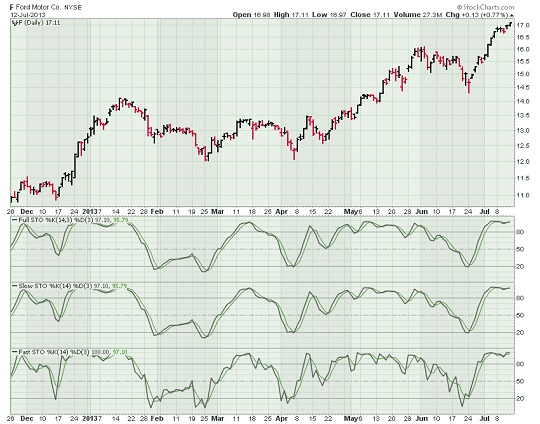The Stochastic Oscillator Measures Closing Price Relative To The Range of Highs and Lows
The stochastic oscillator attempts to predict turning points in a stocks price by comparing the closing price to the price range over a set period of time.
Dr. George Lane is one of the first to advocate on the use of stochastic oscillators to forecast stock price in the 1950s.

Chart courtesy of Stockcharts.com
What is the Stochastic Oscillator
The stochastic oscillator is a momentum indicator that measures the closing stock price in relation to its price range over a selected number of periods.
It is based on the premise that stock prices tend to close near the extremes of a recent price range just before breaking a trend (i.e. turning points).
In the case of an uptrend, prices tend to make higher highs with the closing price near the upper end of that period's trading range. When momentum slows, the closing prices start to move towards to lower end of the price range.
The change in the position of the closing price, relative to the range, causes the stochastic indicator to shift downward.
Stochastic Oscillator Signals
Momentum (Overbought / Oversold)
Divergence (Bullish / Bearish)
Set-Up (Bull / Bear)
How to Calculate the Stochastic Oscillator
There are three types of stochastic oscillators:
- Fast (based on George Lane's original formulas)
- Slow (3-day moving average of George Lane's original formulas)
- Full (Customized Slow Stochastic)
How to Use the Stochastic Oscillator
According to Lane, this indicator should be used with Elliot Wave Theory and Fibonacci Analysis for timing of buy and sell orders.


